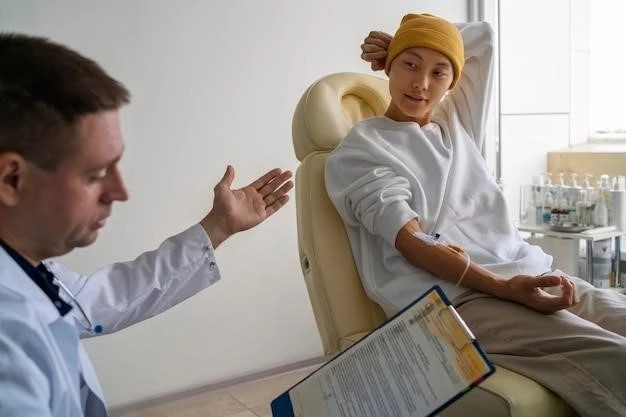Introduction to Oliver Syndrome
Adams-Oliver Syndrome (AOS) is a rare congenital disorder characterized by defects of the scalp and cranium, limb abnormalities, and heart defects. It is a complex condition affecting multiple body systems.
Definition and Overview
Adams-Oliver Syndrome (AOS) is a rare congenital disorder characterized by defects of the scalp and cranium, limb abnormalities, heart defects, neurological concerns, and eye issues. It is caused by genetic mutations and exhibits various inheritance patterns, affecting multiple body systems and requiring comprehensive management.
Causes of Oliver Syndrome
Oliver Syndrome is primarily caused by genetic mutations that result in a combination of scalp defects, limb abnormalities, heart defects, neurological concerns, and eye issues. Inheritance patterns may vary depending on the genetic mutations involved.
Genetic Mutations
Adams-Oliver Syndrome (AOS) is primarily caused by mutations in genes such as ARHGAP31, DLL4, NOTCH1, or RBPJ, leading to the characteristic features including scalp defects, limb abnormalities, heart defects, neurological concerns, and eye issues. These genetic mutations play a significant role in the development of the syndrome.
When caused by mutations in genes such as ARHGAP31٫ DLL4٫ NOTCH1٫ or RBPJ٫ Adams-Oliver Syndrome is typically inherited in an autosomal dominant pattern. This means that having one altered gene copy is enough to manifest the condition.
Symptoms of Oliver Syndrome
Oliver Syndrome manifests in various symptoms including scalp defects, limb abnormalities, heart defects, neurological concerns, and eye issues. It is crucial to recognize and address these manifestations early.
Inheritance Patterns
Adams-Oliver Syndrome is typically inherited in an autosomal dominant pattern when caused by mutations in genes such as ARHGAP31٫ DLL4٫ NOTCH1٫ or RBPJ. This means that the altered gene copy in each cell is sufficient to cause the disorder.
Limb Abnormalities
In Oliver Syndrome, limb abnormalities are a common feature and include congenital distal limb reduction. These limb malformations can vary in severity and may require multidisciplinary management for optimal outcomes.
Heart Defects
Individuals with Oliver Syndrome may present with a variety of heart defects, ranging from structural abnormalities to functional impairments. These cardiac issues require careful monitoring and management to ensure optimal health outcomes.
Neurological Concerns
Oliver Syndrome can be associated with various neurological concerns, such as intellectual deficits and epilepsy, in addition to the typical physical manifestations. Early diagnosis and management of these neurological aspects are crucial for comprehensive care.
Eye Issues
Oliver Syndrome may present with various eye issues, ranging from structural abnormalities to functional impairments. Proper evaluation and management of these ocular manifestations are essential for the overall well-being of affected individuals.
Diagnosis and Testing for Oliver Syndrome
Diagnosis of Oliver Syndrome involves a comprehensive physical examination to identify characteristic features and confirmatory genetic testing to detect mutations in genes associated with the syndrome.
Physical Examination
Diagnosing Oliver Syndrome often involves a thorough physical examination to identify characteristic symptoms such as scalp defects, limb abnormalities, heart issues, neurological concerns, and eye problems. This evaluation is crucial for early detection and appropriate management of the condition.
Genetic Testing
In Oliver Syndrome, genetic testing plays a pivotal role in confirming the diagnosis by identifying mutations in genes such as ARHGAP31, DLL4, NOTCH1, or RBPJ. Understanding the specific genetic alterations is crucial for personalized management strategies in affected individuals.
Treatment Options for Oliver Syndrome
Treatment for Oliver Syndrome focuses on symptom management and may include skin grafting, cranial or limb surgery, physical therapy, and the use of prostheses to address limb malformations.
Symptom Management
There is no cure for Oliver Syndrome; treatment focuses on managing symptoms. Approaches include skin grafting, surgical interventions, physical therapy, and the use of prostheses for limb abnormalities, aiming to improve the quality of life for individuals with the syndrome.
Surgical Interventions
Surgical interventions play a crucial role in managing Oliver Syndrome. Skin grafting and cranial or limb surgery are common procedures performed to address skin lesions, scalp abnormalities, and limb malformations, enhancing both the functional and aesthetic aspects of individuals with the syndrome. Physical therapy and prosthetic use may also complement surgical interventions to improve overall outcomes.
Physical Therapy
Physical therapy plays a vital role in the management of Oliver Syndrome. It focuses on improving mobility, strength, and function through tailored exercises and interventions. Physical therapy aims to enhance the overall quality of life for individuals with Oliver Syndrome by addressing specific physical limitations and promoting optimal physical well-being.

Prognosis and Complications of Oliver Syndrome
Individuals with Oliver Syndrome may experience potential complications related to cardiac issues, neurological concerns, and limb abnormalities. Long-term outlook and quality of life depend on early intervention and comprehensive management of associated complications.
Potential Complications
Complications associated with Oliver Syndrome can involve cardiac issues, neurological concerns, and limb abnormalities. Proper management and early intervention are essential to mitigate the impact of these complications on the long-term health and well-being of individuals with the syndrome.
Long-Term Outlook
The long-term outlook for individuals with Oliver Syndrome depends on early intervention and comprehensive management of associated complications. The prognosis may vary based on the severity of cardiac issues, neurological concerns, and limb abnormalities, highlighting the need for ongoing medical support and multidisciplinary care to optimize outcomes.

Research and Advancements in Oliver Syndrome
Technological innovations and treatment developments play a crucial role in advancing the management of Oliver Syndrome. These advancements aim to enhance diagnostic capabilities, improve treatment strategies, and ultimately optimize outcomes for individuals affected by the condition.
Technological Innovations
Technological advancements in the management of Oliver Syndrome are crucial for improving diagnostic procedures, enhancing treatment modalities, and ultimately optimizing outcomes for individuals affected by the condition. Innovative technologies help in better understanding the genetic basis of the syndrome, facilitating personalized treatment plans and improving overall patient care.
Treatment Developments
Current treatment approaches for Oliver Syndrome focus on symptom management and may involve skin grafting, cranial or limb surgery, physical therapy, and the use of prostheses to address limb malformations. Advances in treatment strategies aim to enhance quality of life and functional outcomes for individuals with Oliver Syndrome.
Support and Resources for Individuals with Oliver Syndrome
Individuals with Oliver Syndrome can benefit from support groups offering emotional assistance and information, as well as therapeutic services providing specialized care for their unique needs.
Support Groups
Support groups play a crucial role in providing emotional support and informational resources to individuals and families affected by Oliver Syndrome. These groups offer a sense of community, shared experiences, and guidance to help navigate the challenges associated with the condition.
Therapeutic Services
Therapeutic services, such as physical and occupational therapy, play a crucial role in managing the unique needs of individuals with Oliver Syndrome. These services aim to enhance mobility, improve functional abilities, and maximize independence, addressing both physical and developmental challenges associated with the condition.
